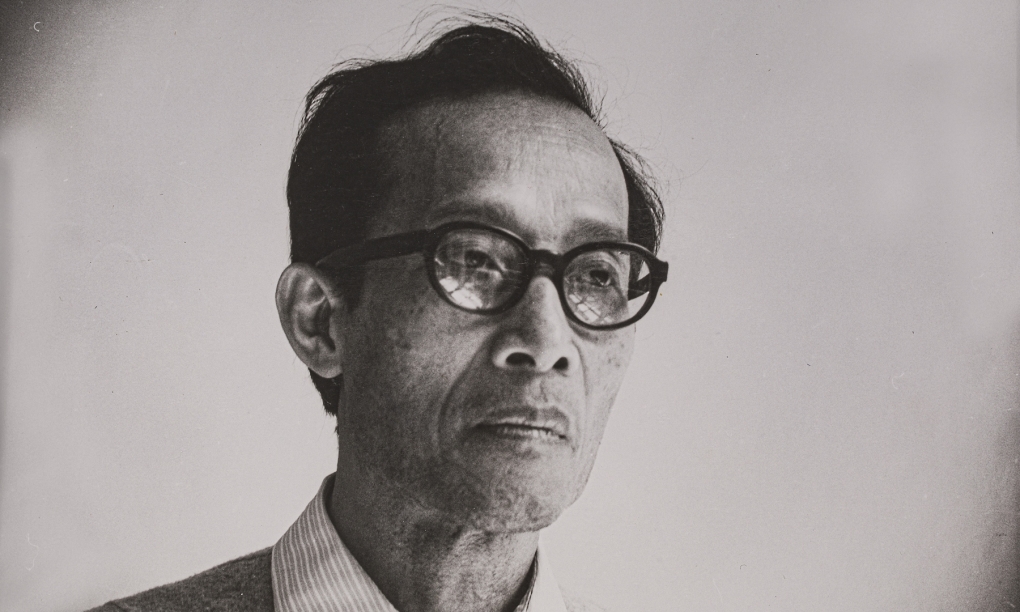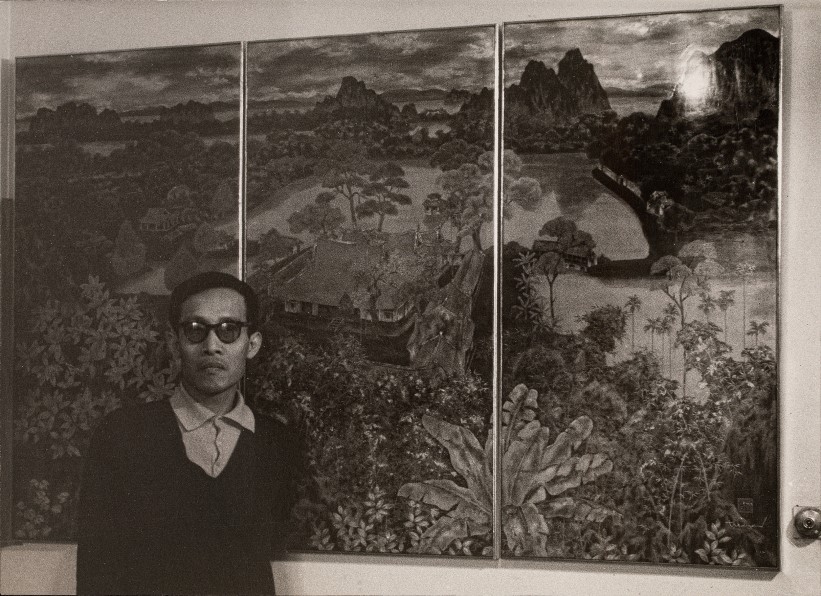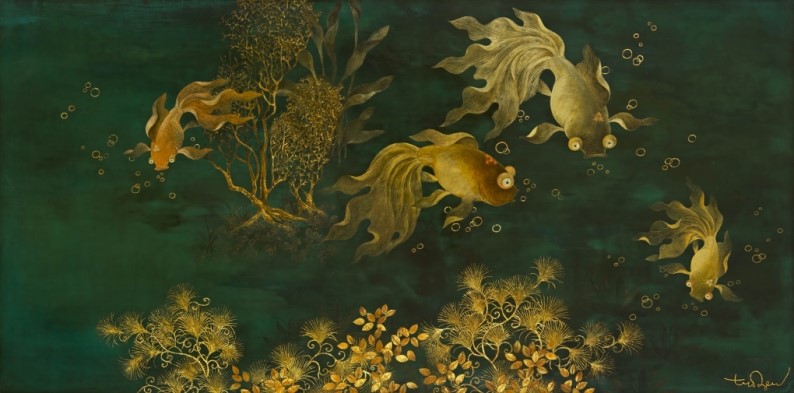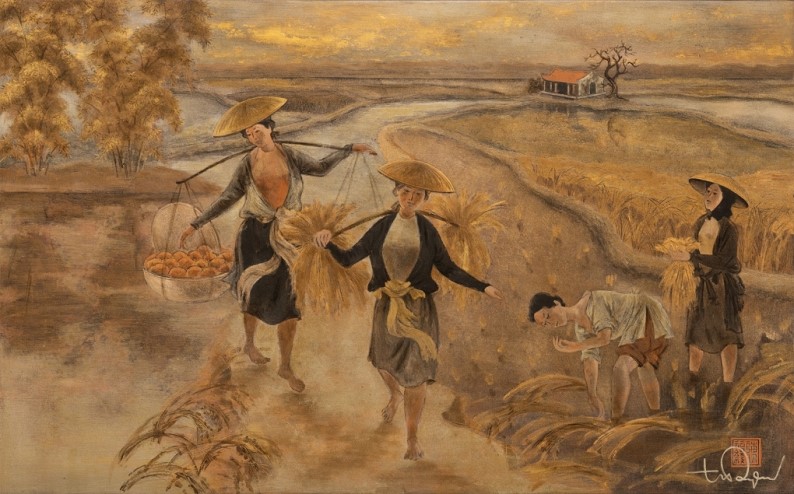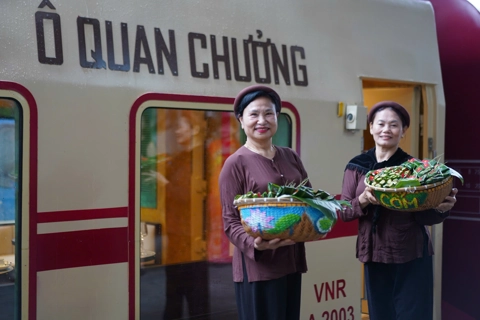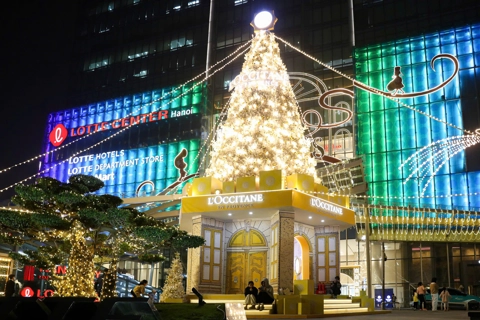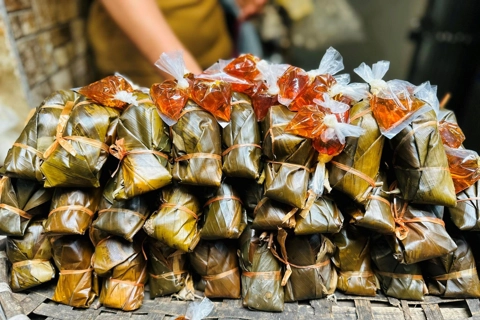Hanoi-born painter's artwork returns from Europe
Tran Phuc Duyen belonged to the last generation of École des Beaux-Arts students. One of those who emigrated to Europe, he was the only one to pursue lacquer as a lifelong passion.
To celebrate the 100th birthday of Hanoi-born painter Tran Phuc Duyen (1923-1993), a selection of his 150 works was brought from Switzerland to Vietnam.
The exhibition "Fated Encounters: Tran Phuc Duyen" will be held from July 22 to August 6 in a 600-square-meter exhibition space at the Quang San Museum in Ho Chi Minh City.
Painting for the Pope
Duyen was born in his father's hometown in Phu Xuyen District, while his mother hails from Bach Mai Village in Hanoi. As a member of the last graduating class of the Indochina School of Fine Arts (now Vietnam University of Fine Arts), he studied lacquer painting and created works in this style throughout his life.
In 1941, he enrolled in the preparatory class of the Indochina Fine Arts College, where painters Nam Son and To Ngoc Van taught.
| Painter Tran Phuc Duyen has many exhibitions abroad. Photo: Pham Le art collection |
After the school closed in 1945, Duyen opened a studio in Hanoi. In 1950, three of his lacquer works, including a six-panel lacquer painting of Thay Pagoda (Hanoi), were sent to the Vatican as a gift to Pope Pius XII. They are still preserved in the Vatican Museum.
During his time in Vietnam, he worked mainly in Hanoi but had his first exhibition in Saigon in 1952. At the end of 1954, he moved to France. The artist practiced at Jean Souverbie's workshop, the Paris School of Fine Arts, and held an exhibition in Nice in 1961. During the next seven years, Tran Phuc Duyen held eight solo exhibitions in Spain, France, and Switzerland. At the end of 1968, he moved to Switzerland, where he lived until his death, holding 13 more solo exhibitions in Switzerland, France, and Canada.
| Painter Tran Phuc Duyen and a lacquer painting presented to Pope Pius. Photo: Pham Le art collection |
In addition to about 20 lacquer paintings depicting European landscapes, the rest reflect Vietnamese landscapes, still lifes, and people.
Since 1980, Tran Phuc Duyen had produced fewer large paintings in the traditional lacquer style and turned to small-scale works with ink brush strokes, Zen art, and abstract paintings. In the last years of his life, he practiced at home, so his works are imbued with meditative qualities.
"Everything in Tran Phuc Duyen's paintings is processed to make room for silence, dreams, and meditation. The artist went beyond the limits of expression to depict the profound unity of things. Thus, his last lacquer paintings were perfectly finished. Having left his homeland, the artist seems to have found his own country," said critic Jean-Claude Piguet at Tran Phuc Duyen's solo exhibition in Switzerland in 1983.
Bringing a treasure home
In 2018, two collectors, namely Le Quang Vinh and Pham Quoc Dat (owners of the Pham Le art collection), while researching Indochinese fine arts, accidentally came across an article by an American author about an exhibition called The Forgotten Treasure of painter Tran Phuc Duyen in Switzerland.
| A lacquer painting of Tran Phuc Duyen. Photo: Pham Le art collection |
They immediately went to Europe to look for the organizer of the exhibition. Here they learned that the painter Tran Phuc Duyen had died in Bern in 1993. As he had no children, all his works, documents, and relics were packed and stored in the warehouse of a suburban castle.
Thus, more than 100 works and artifacts were left into oblivion. In 2013, the new owner took over the castle, discovered this legacy, and set out to find the heir of painter Tran Phuc Duyen. They contacted Tran Phuc Duyen's nephew - Tran Tuong Van - to sell the works.
By the time two Vietnamese collectors had access to these works, some had already been sold, while the rest were stored in unsafe conditions. Some were damaged, with frames missing.
"Looking at the artworks lying on the ground, some of which are two-panel paintings that have been split for retail, we are unfortunate, we decided to use all our savings to buy back this massive legacy," said Pham Quoc Dat.
Two collectors met Van in Paris, France, to express their desire to buy back all of the artist's works, to preserve the legacy and bring Tran Phuc Duyen's art back to Vietnam.
After bringing the collection to Vietnam, Le Quang Vinh and Pham Quoc Dat hired experts to repair the damaged paintings.
Because Tran Phuc Duyen's paintings used a combination of Eastern and Western materials, the repair and restoration process was difficult, as materials had to be ordered from many countries. Moreover, the restoration is necessary to express the idea of the late artist.
In remembrance of Tran Phuc Duyen, the collectors, together with curator Ace Le and the family of the late painter, will introduce his paintings in HCM City.
| The scenery of the homeland's daily life is reflected in the work of Tran Phuc Duyen. |
The exhibition explores works created since his graduation from École des Beaux-Arts Class 16 (1942-1945), his atelier period (1948-1954), his time in France (1954-1968) and Switzerland (1968-1993), until his death.
The works are grouped into major themes, from figurative to minimalist: everyday life, landscape, still life and miniature, ink wash and Zen art, abstraction, and commemoration.
The exhibition will be accompanied by a book on Tran Phuc Duyen's life and career. It will be published in 2023 with the support of the Pham-Le Collection and will include commentaries by international and Vietnamese art scholars.
"I am very happy to be back in Vietnam to celebrate the 100th birthday of my uncle, the painter Tran Phuc Duyen. Perhaps this is how he came back after a lifetime in Europe," said Tran Tuong Van.

